You can meet the water needs of newly planted seeds, seedlings and mature plants by using watering cans and hoses or an automatic irrigation system. Contact your school’s Principal, Building Services Supervisor or Director of Physical Plant Services before planning how your school garden will be irrigated. Discuss your ideas with them to learn the possibilities and get their support. NOTE: Some schools have recycled water available for use on landscaping, but edible crops in school gardens must be irrigated with potable water only.
Automatic Watering Systems
Children enjoy watering plants. Some teachers elect hand watering to help students understand the quantity and frequency required to meet the water needs of plants. However, some plants may not get enough water during weekends, holidays, and vacations.
Automated systems provide water on a regular basis and assist teachers by eliminating the drudgery of hand watering when students are not available. They also help ensure that water use is both efficient (conserves this limited and valuable resource) and effective (meets the needs of the plants).
Drip irrigation is preferable to overhead sprinklers because it prevents:
-
- Water waste through evaporation.
- Weed growth.
- Overspray onto plant leaves and foliar diseases.
Designing and building an automatic watering system is a complex task. You probably want to enlist the services of a professional or of a knowledgeable volunteer. However, there are resources and products available for those who elect to do it themselves. The essential parts of an automatic system include a shutoff valve, a pressure regulator, a filter, a timer, pipes or tubing and emitters.
Collecting and Using Rainwater
You may have the opportunity to collect and use stored rainwater. Check with your district on their policy. Rainwater harvesting can be a value-added method of irrigating crops in a school garden, but you must be sure to divert the first rains away from the storage tank. First rains wash off substances that have been baked onto the roof and/or rain gutters during many months of hot San Diego sun. They may include toxic roofing sealants, smog emission residues, bird and rodent feces, decomposing insects, weed seeds, leaves and more. If these toxins enter the tank, they will contaminate the water and make it unusable to irrigate edibles. First rain diverters are common add-ons to rain harvesting systems, but if your school does not have a diverter, you may use harvested rain water only to irrigate ornamentals, shrubs and trees.
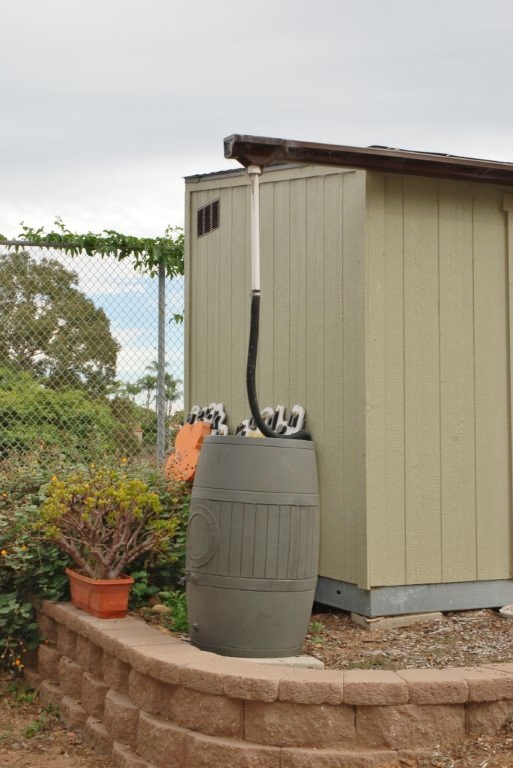
Ollas and Wicking Beds
Ollas were introduced to the Americas by Spanish settlers in colonial times. They are unglazed, porous, glazed containers shaped like a jug with a narrow neck and lid. The olla is buried in the ground next to the roots of the plant, with the neck of the olla extending above the soil. The olla is filled with water which gradually seeps into the soil. It is an efficient method, since little water is lost to evaporation or run-off. The ollas are fitted with caps that reduce evaporation.
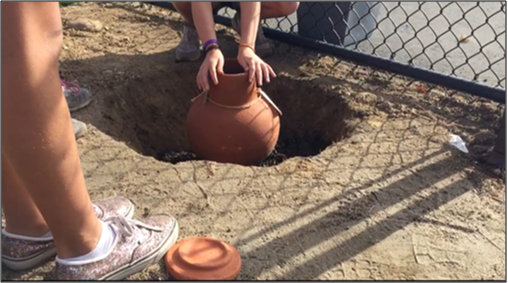
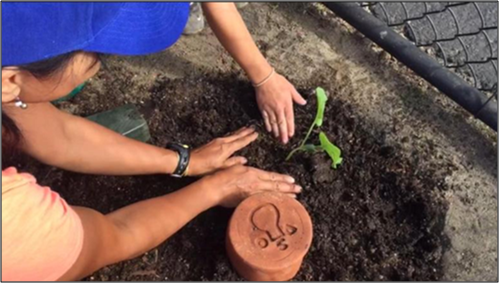
Wicking beds are raised garden beds with a water reservoir underneath. They can be made from a variety of watertight materials. Water is automatically wicked upward to water plants from below rather than from above. They are basically containers with water reservoirs at the base – like a giant self-watering pot. Moisture is drawn up through the soil via a process called capillary action or wicking.
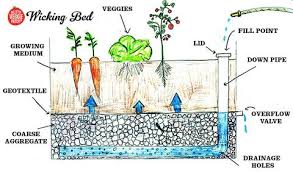
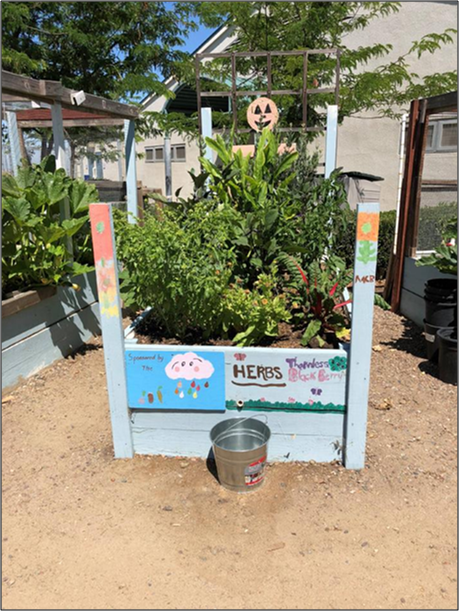
For more examples of Irrigation techniques, see Drip Irrigation Self Watering Planters in the Presentation section of our website.